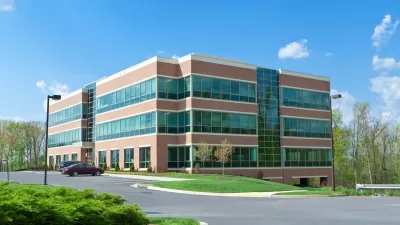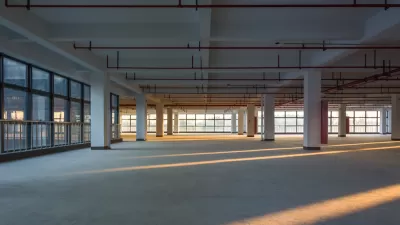As tech firms like Apple expand their satellite offices and remote work opportunities, economists and work experts debate just how much the dispersal made possible by remote work will be held in check by the forces of agglomeration.

In 2012, economist Enrico Moretti published his analysis of economic agglomeration in his widely read The New Geography of Jobs, in which he cited the "Great Divergence" between the places with concentrated talent and jobs and the places left behind by economic development. Now, with remote work opening up new possibilities to live and work in more diverse places, will this model be dismantled?
Moretti doesn't think so, writes Greg Rosalsky. The Berkeley economist "believes that computer screens remain a poor substitute for being face to face. Living and working near one another, he says, allows for random collisions of brains that can spark new ideas. Ideas that would not be generated on Zoom."
"In 2020, a group of economists surveyed 22,500 American workers and executives and found evidence that remote work would 'stick' — but they weren't talking about full-time remote work. The average office worker, they predicted, will work two days a week from home — as Apple is now allowing its workers to do. That's a huge change. But it still means that workers will have to be in the office three days a week. 'If that's the case, the link between place of work and place of residence will stay intact,' Moretti says."
To Moretti, the "gravitational vortex" of agglomeration is too powerful a force to be completely eliminated.
FULL STORY: Why Remote Work Might Not Revolutionize Where We Work

Alabama: Trump Terminates Settlements for Black Communities Harmed By Raw Sewage
Trump deemed the landmark civil rights agreement “illegal DEI and environmental justice policy.”

Planetizen Federal Action Tracker
A weekly monitor of how Trump’s orders and actions are impacting planners and planning in America.

The 120 Year Old Tiny Home Villages That Sheltered San Francisco’s Earthquake Refugees
More than a century ago, San Francisco mobilized to house thousands of residents displaced by the 1906 earthquake. Could their strategy offer a model for the present?

In Both Crashes and Crime, Public Transportation is Far Safer than Driving
Contrary to popular assumptions, public transportation has far lower crash and crime rates than automobile travel. For safer communities, improve and encourage transit travel.

Report: Zoning Reforms Should Complement Nashville’s Ambitious Transit Plan
Without reform, restrictive zoning codes will limit the impact of the city’s planned transit expansion and could exclude some of the residents who depend on transit the most.

Judge Orders Release of Frozen IRA, IIJA Funding
The decision is a victory for environmental groups who charged that freezing funds for critical infrastructure and disaster response programs caused “real and irreparable harm” to communities.
Urban Design for Planners 1: Software Tools
This six-course series explores essential urban design concepts using open source software and equips planners with the tools they need to participate fully in the urban design process.
Planning for Universal Design
Learn the tools for implementing Universal Design in planning regulations.
Clanton & Associates, Inc.
Jessamine County Fiscal Court
Institute for Housing and Urban Development Studies (IHS)
City of Grandview
Harvard GSD Executive Education
Toledo-Lucas County Plan Commissions
Salt Lake City
NYU Wagner Graduate School of Public Service





























